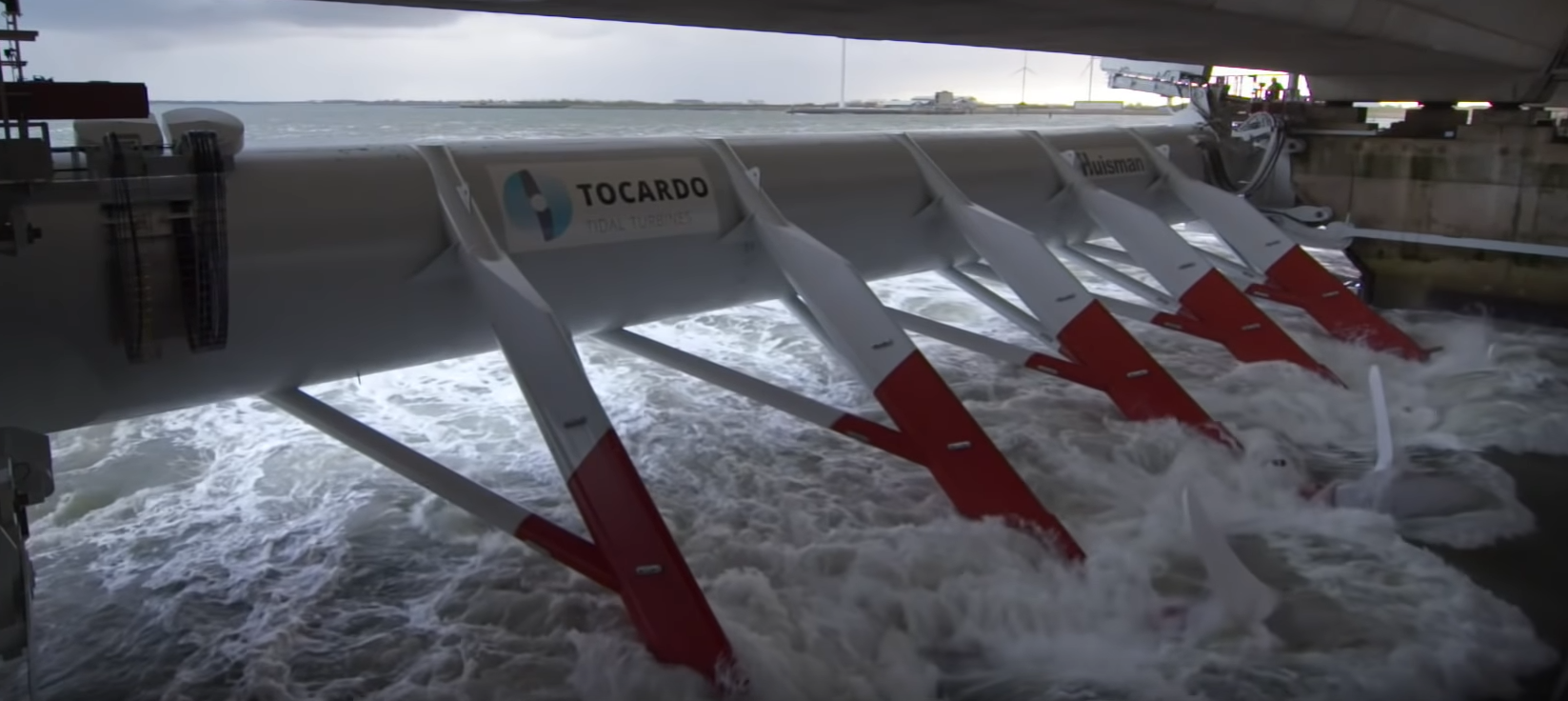DMEC_Dutch Marine Energy Centre
In the quest for sustainable energy sources, energy from tidal currents offers great opportunities. NIOZ is partner in the Dutch Marine Energy Centre (DMEC)-project which brings together a wide range of marine energy expertise.

Tidal current turbines in the Oosterschelde storm surge barrier. Photo: Tocardo
On November 9th 2018 the final DMEC-project seminar took place in Papendrecht.
The major results achieved in the DMEC-project are:
• The transition from the Tidal Testing Centre (TTC) to DMEC
• Broadening from tidal current energy to marine energy, including salinity gradient energy, wave energy, solar at sea and Ocean Thermal Energy Conversion (OTEC).
• Improvement of the international collaboration and international embedding.
• Growth of the organization despite the turbulent times
• Deepening and broadening of knowledge in the field of marine energy
Although the project is finished the DMEC organisation will of course continue!
Within this project NIOZ offers monitoring options and test facilities and studies the effect of a tidal turbine on fish behaviour and mortality. During the final DMEC seminar NIOZ presented their preliminary findings & observations of their studies.
Bio fouling
Bio fouling is a problem that almost every marine energy installation has to deal with. One of the solutions to prevent fouling of algae and smallpox to the turbines could be found in the application of ultrasonic sound. NIOZ researchers Louis Peperzak and Lodewijk van Walraven researched the effectiveness of Ultrasonic Antifouling protection. Unfortunately, the effectiveness of this system could not be demonstrated on test plates in the Western Wadden Sea.
Report: Effect of a 100 Watt ultrasound transmitter on marine fouling
By NIOZ-scientists Lodewijk van Walraven & Louis Peperzak
What is the effect on fish?
One of the questions about tidal energy installations is what the 'far field' effects of such installations are on fish. NIOZ researchers Lise Klunder and Judith van Bleijswijk investigated whether the effect of a rotating tidal turbine on the fish population was charted using DNA traces in the water column. Preliminary conclusions from their work indicate that: small pelagic fish species such as herring seemed to avoid the turbine. Predatory fish such as whiting turned out to be more present when the turbine was running. Unfortunately, the Marsdiep turbine was removed earlier than planned, which resulted in insufficient statistical support.
Report: Effect of an energy turbine on fish eDNA as indicator for species composition
By NIOZ-scientists Lise Klunder & Judith van Bleijswijk.
The DMEC-project has 15 project partners and is co-funded by the EU program 'Kansen voor West' and the Province of Noord-Holland.